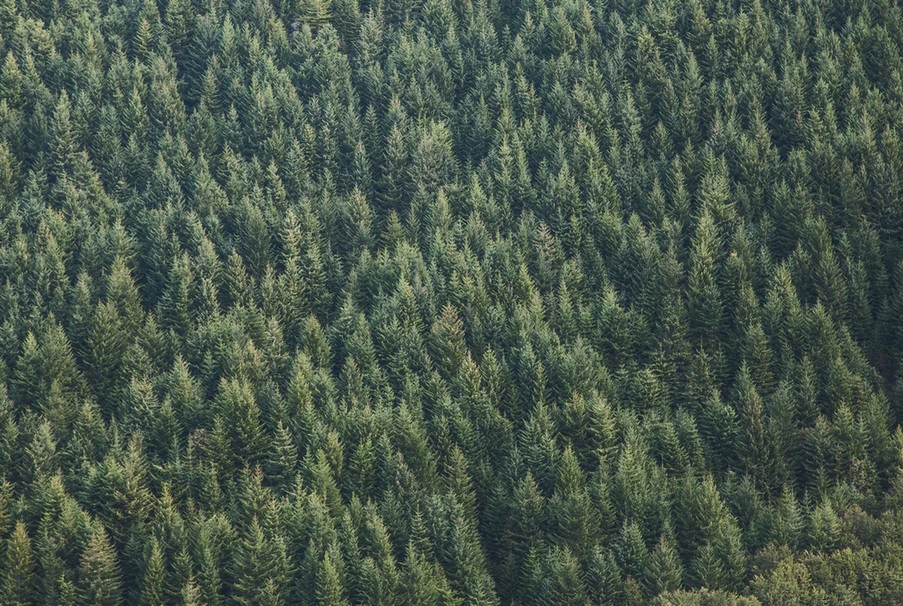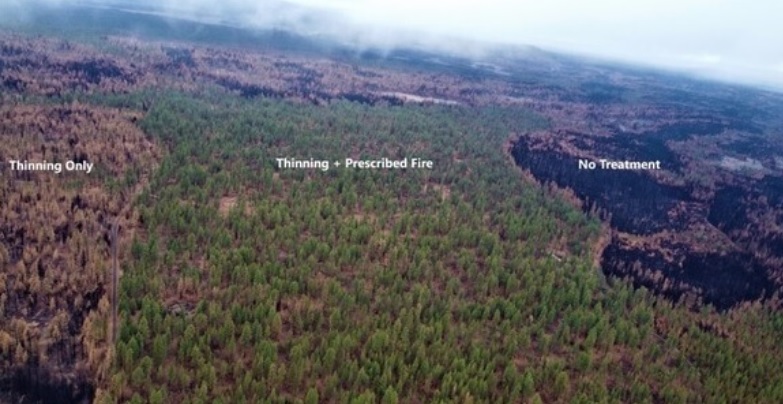
Moving Forward Needed Management of Federal Forests
By Oregon State Senator David Brock Smith
As you know, I have long pushed for more proactive forest management from our federal agencies on their federal managed lands to bring timber resources to market, creating jobs, while protecting our communities from wildfire.
I worked on drafting and passing HB 4118 that: Expresses state policy regarding pursuit of projects under Good Neighbor Authority Agreement. Instructs signatory state agencies to work with federal land management agencies to prioritize projects. Requires Governor and Federal Forest Working Group to jointly develop recommendations for goals of Good Neighbor Authority Agreement. Establishes deadline for Governor or designee agency to report recommendations for goals to Legislative Assembly. Appropriates moneys to State Forestry Department for supporting development, planning or implementation of priority projects on federal forestland under Good Neighbor Authority Agreement.
I then worked on drafting and passing SB 872 that: Instructs State Forestry Department to endeavor to partner with federal agencies to undertake certain activities in federal forests related to fire prevention and request that federal agencies fund portions of those activities.
SECTION 1. (1) The State Forestry Department shall:
(a) In collaboration with any forest protective association or agency that is under contract or agreement with the State Board of Forestry for the protection of forestland against fire, and whose protection area is or may be affected by a fire on nearby federal lands, and with a focus on protecting lands and rural communities within the wildland-urban interface, as defined pursuant to ORS 477.027, from fire on federal lands, endeavor to further shared stewardship to decrease wildfire risk across Oregon through increased partnership with federal agencies to expand activities under the Good Neighbor Authority Agreement described in ORS 526.275 in federal forests through:
(A) Increasing forest thinning.
(B) Reducing ladder fuels and other hazardous fuel loading.
(C) Restoring meadowland.
(D) Increasing biomass utilization.
(E) Increasing post-disturbance recovery and restoration activities.
(b) Request that the federal agencies fund portions of the activities described in paragraph (a) of this subsection.
(2) Activities undertaken pursuant to subsection (1) of this section must be executed in a manner that protects and enhances the long-term ecological health of a landscape, in conformance with the most broadly accepted scientific principles of forestry.
These two pieces of legislation were critical steps in moving forward with a cohesive western states strategy for proactive forest management on federally managed lands to increase production, economic development and family wage jobs while reducing fire risk to our rural communities.
The data is very clear.
On the ten year average (2014-2023):
• 82% of acres burned are on federal land.
• Of the 18% burned on private land, 15% were from fires from federal land.
• Of the 3% of acres that start and burn on private land, 98% are kept to less than 100 acres.
Moving Forward:
With the passage of my legislation above and the updated data, I have been working to build a coalition of Western State Legislators to move forward a comprehensive proactive federal forest management strategy for a unilateral push on our western state federal delegation.
I have always said, “our pacific northwest forests are a sustainable, renewable gift to our residents. They sequester carbon, and in doing so they create the most resilient building material on Earth, with a biproduct that is oxygen.” Even the environmental for profit non-profits know they can no longer hide behind their “climate change” agenda, when we have the tools and management strategies to protect our federal forests and rural communities from burning to the ground. When they do burn, they release roughly 25% of their stored carbon building material (depending on fire severity), leaving the rest to be released while the trees rot on the forest floor. These thought processes are insane when again, we have the science, data and tools to do so much better.
This is again why I fought to pass the legislation above, so that we may move forward with proven, proactive federal forest management strategies.
On July 6th, 2021, the Bootleg Fire was ignited when lightning struck near the small community of Beatty, Oregon in the Fremont-Winema National Forest.
As you can see from the aerial picture above, the thinning, ladder fuels reduction and prescribed fire saved the portion treated within the Fremont-Winema National Forest, under the worst fire conditions on the third largest wildfire in Oregon history.
We have the science, we have the data, we have the tools, and I am working to bring the resources we need to implement this strategy within our federal forest system. Working with former Senator Heard, we were able to allocate resources to start the process of building Oregon’s only Wildfire Training Center on over 27 acres of land just north of Gold Beach, the mouth of the mighty Rogue River.
The Rogue-Siskiyou Regional Wildfire Training Center’s (RSR) has already received nearly $1 million dollars in state funding and we are currently actively pursuing federal investment, with board members recently back from a week of meetings in D.C. with key U.S. Senators and Representatives advocating for project funding. In tandem, I am working to again build our western states coalition of legislators to also push for the these needed additional federal investments into our comprehensive proactive federal forest management strategy that mirrors the work within the Fremont-Winema National Forest described above.
We will then be able to have our hardworking wildland firefighters partner with our private timber companies, and transition during the off-season after wildland fire fighting efforts, to proactive federal forest management to reduce fuel loads while increasing supply of federal timber to our mills, that cannot be exported overseas and our mills desperately need.
Not only will this bolster additional full time, year-round employment in our rural communities, these new jobs will not all be tree fallers and firefighters. We will be able to create opportunities for other positions to allow for our youth, our most important asset, the ability to also have good paying, family wage positions so that they have more opportunities to live and raise their families in our rural communities. This of course all while making our federal forests more resilient and protecting our rural residents, their communities and the industries that support them.
These proactive management efforts will start closest to our communities within our Wildland-Urban Interface (WUI) as outlined above in SB 872 that I drafted and passed. Focusing first within the WUI’s, we can protect our homes and communities, which will not only protect private lands, but lower the cost of skyrocketing insurance premiums that have been ever increasing due to the negligence from lack of management of federal forest lands.
We will then continue outward, using the science and data we have and we know works, to create a federal forest system resilient to fire. Restoring historic meadowlands that are natural fire breaks, restoring wildlife habitat and protecting our beloved salmon and other wildlife from the perils of wildfire.
I have been committed to this work for many years and our efforts are building the needed momentum to move this work forward for our rural communities. We have a housing crisis and Governor Kotek wants to build 36 thousand homes a year in Oregon, and we have the sticks to build them. There is no reason we should be importing any logs to be processed, when we have the resources out our back door.
Disclaimer: Articles featured on Oregon Report are the creation, responsibility and opinion of the authoring individual or organization which is featured at the top of every article.


